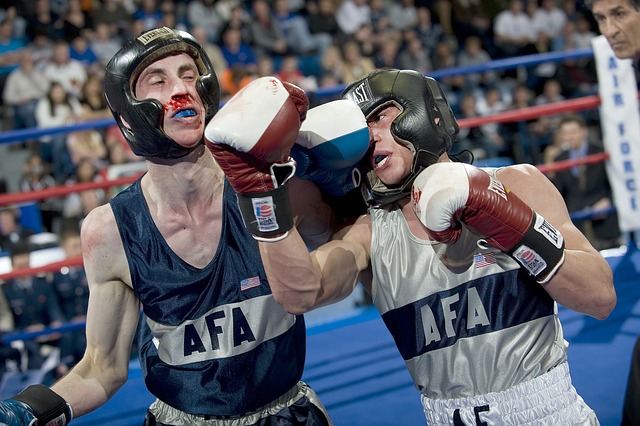
In my last article, I described the foundations of our training programs, the most important of which is athlete accountability and buy-in. Training programs only work if the athlete works and for us that includes between camps when we may be apart. I mentioned our conditioning standards for the beginning of camp and how we keep them healthy both in and out of camps. Here I will describe how we sharpen the blade from a conditioning perspective.
Condition for the fight, not the weigh-in.
Weight cutting is so complex it could be it’s own series of articles. Personal discipline and nutrition take care of our weight cuts. Much like I mentioned in the last article, our guys come to camp in shape, they also come in at an acceptable weight. At the beginning of camp we’d like the fighter to be within 10% of making weight, a welterweight being 12-15 pounds over at eight weeks out is not the end of the world. On the contrary, I have had fighters that show up roughly 30 pounds (23%) over to fight at 130. At that point, all else goes out the window besides getting the weight down and making sure their conditioning is ready to fight. The training is brutal and they’re miserable outside the gym because they basically end up starving themselves, thus seriously impairing recovery. Coincidentally, I have never had a fighter put themself in that situation twice; they now show up to camp well under 10% from making weight. In fact, the majority of our fighters eat dinner the night before weigh-ins and have a small breakfast the morning of. Being well-fed helps them sleep, fuels their muscles and keeps them in a better overall mood during fight week. It also allows us to avoid mineral deficiencies that hurt performance. Getting to eat steak or fish every night during camp isn’t bad either.
I know there is a lot of differing opinions about weight cuts and possible advantage of a big weight regain after weigh-ins. The fight usually happens between 24 and 30 hours after weigh-ins and the fact is when you have a big refuel after a big cut, only so much of that new water and nutrients can be utilized by the cells during the fight. The timeframe is too limited for maximal absorption. So much of this new weight is slowing the fighter down rather than helping them. A fun fact for you: all American medalists at the 2012 Olympics in combat sports had less than a five-pound final cut. Oh yes, we had combat athletes with much bigger cuts, but none of them won anything.
There’s nothing sweet about the science of conditioning.
Conditioning is a science in itself involving effects on the heart and lungs, changes in blood chemistry and impact on the energy systems. I’m going to try and stick with practical application with minimal scientific background, because unless you’re a meathead geek like me, it probably won’t interest you much. However if you want a much more in-depth look at the energy systems as they pertain to combat sports and programming for conditioning, I suggest Joel Jamieson’s book, Ultimate MMA Conditioning. He provides a great resource to build your own program to suit your needs. I use many of the same terms and concepts as Joel in preparation of our fighters. To provide a background for the rest of the article, I will provide a brief overview of the energy systems.
Aerobic
This is the system that transports oxygen through the body and to working muscles. Aerobic training strengthens the heart and increases stroke volume, the amount of blood pumped out each heartbeat. The larger the stroke volume, the more oxygen gets delivered in a shorter time. For boxers the aerobic system is used largely for recovery. Think of a boxer between rounds, the fighter getting more oxygen delivered more quickly will recover better; this is critical in the later rounds. The same is true during camp, only on a larger scale. The quicker the fighter recovers from session one, the better they will be in session two and so on. Again, this is very important for the later portion of camp. When training for aerobic conditioning, it is most beneficial to use long durations where the heart rate remains elevated but not too high. This is highly individual, but a safe bet is below 150 beats per minute. Above that rate, the fighter begins producing lactic acid. This is known as the anaerobic threshold.
Anaerobic
There are two main parts of the anaerobic system: the lactic and alactic. We often equate lactic acid to the burning feeling in our muscles when we work extremely hard. Through experience, we know that it takes some time before we feel this. Research says that the release of lactate begins at about 0:15 - 0:20 of high intensity work. So the alactic system is providing the energy from 0:0 - 0:15/0:20 of all-out effort. We breakdown the alactic and lactic systems even further into power training and capacity training. Power refers to the early stages of the system and capacity to the later stages. Here is a chart showing work times and boxing examples:
 *Note these are approximates, athletes may differ by a few seconds based on various factors.
*Note these are approximates, athletes may differ by a few seconds based on various factors.
We use different training methods to develop each of these four subsets of the anaerobic system. We will focus our cycles on one of the subsets, but there will be some carryover adaptations to their neighboring subset. For instance, if the training session is for lactic power, there will also be some benefits to the alactic capacity and the lactic capacity, especially if through the session we vary the times of exertion to hit the entire range of 0:20 - 0:90.
Coaching: An art based on a science
The most important part of planning a training camp is knowing your athletes. I know that prior to camp starting is when the bulk of our aerobic training takes place. This is when the fighters will do their long multi-mile runs or play marathon games of basketball. Of course before camp they are still getting into the Boxing gym as well. In part one, I touched on what to do if the fighter’s aerobic system is lacking at the beginning of camp. Originally we used the first strength training session of each camp as a “test” to see where the fighters conditioning was. I loosely say test, because it was more like 90 minutes of hell. By our third camp together the fighters had figured it out and came in shape. We haven’t had to revisit these hell sessions in three years, now I use our performance in sparring as a guide. Maintaining the aerobic base between camps is important because it allows us to hit the ground running in camp and periodize how we develop the systems we need for the fight.
When you think about the format of a fight, it’s 3:00 rounds with a 1:00 break. The above chart shows that lactic capacity supplies the energy for 3:00, so it stands to reason that LC is the main subset we need to focus on, right? Not exactly. When you breakdown the actions of a fight, you see that most exchanges/clinches are less than 0:10. When considering these energy systems, we are concerned with the amounts of time that are high intensity exertion. The aerobic system assists recovery between exchanges, even if the breaks are only a few seconds. The tricky part is that even though a less than 0:10 work time is within the alactic power subset, there is probably going to be another exchange well before the alactic system has full recovery. At this point the athletes body begins to move into alactic capacity and the more activity in a round the more likely they get into lactic power/capacity. So it is possible the fighter will experience the full spectrum within a round or fight. Through the camp we prepare the fighters for each of these subsets.
It takes about two weeks of training to begin true adaptation into an energy system and about six weeks for maximal adaptation. The adaptations depend on how well the conditioning work outside the ring is coordinated with the boxing training. In other words, if we are doing explosive work limited to 0:08 per set in the weight room, but in boxing they spend an hour on the speed bag at a moderate pace, the two training stimuli are going in different directions. You may still be able to get some results, especially with lower level athletes, but not as good as if the training was coordinated.
Our camps begin with an emphasis on the lactic system. Everything from sparring set-up, timed intervals on the heavy bag, mitt work to our strength and conditioning. We spend about three weeks in this phase. There will still be some lactic work done later in camp, but the majority happens from weeks 8-5. We do a variety of exercises and drills in the time frames for the lactic system, but our choices really depend on the fighter’s level of development within our program. A beginner does less complex drills, such as two-feet agility ladder drills, whereas an intermediate will begin single-leg agility ladder drills, compared to the advanced who may use single-leg plyos in the agility ladder. The advanced group regularly does single-leg agility ladder drills for up to 3:00, then switch to the other leg for 3:00, then change drills and go for a set time period. This can last up to 20 minutes with our top fighters using the most complex drills like SL Slaloms, SL Power Hops and SL Ickey Wides. We also use isometrics to increase our time under tension, for example the fighter may perform a bodyweight squat, hold the bottom position for 0:06, then jump. Upon landing softly, they squat again. By performing six to ten reps like this, the set lasts 0:42 - 0:70. The key is that we are conditioning the muscle fibers to handle the accumulation of lactic acid, we’re not worried that our fighters are never going to hold a squat in the ring.
A final note on lactic training: it does challenge the fighter’s ability to recover. This type of training releases a lot of cortisol, the hormone associated with tissue breakdown. This is a necessary evil in the process of peaking for the fight. I wish I could give a clear-cut answer about programming for this, but again it comes down to knowing your fighter. We have found there to be an ideal training time in the lactic system for our fighters, most of them are around two hours per week between boxing and strength and conditioning. Any more than this creates too great a demand on their recovery.
Weeks 5-2 we focus most of our work on alactic training. Boxing, as well as strength and conditioning, progressively become shorter and more intense. All lactic training occurs in boxing; we track the total time in this energy system and keep it between one and one-and-a-half hours per week. By now, our conditioning is so high that getting the heart rate above 150 is rare and it recovers quickly when there is a subtle break, so getting excessive cortisol becomes less of a concern. To further facilitate recovery, we program in a mini-taper, usually lasting about three or four days, where all workload is dropped significantly, this allows us to finish camp very strong. The placement of this taper in camp is a subjective call and fighter feedback plays a major role.
The alactic training sessions are specifically focused on power or capacity. These sessions are all about explosive power for a given time period, then allowing near-full recovery. At this point in camp we will be lifting our heaviest weights, which on an alactic power day, the reps will be somewhere between 2-4, equaling between 0:05 - 0:10 of work. Along with low rep strength exercises, we use bands, medballs, jumps, plyometrics and explosive core movements.
Our running program is very demanding, but rather simple. We run intervals in camp, the times line up with the energy systems we are focusing on at that point. We will do some long-distance runs but they are for recovery and only as needed. If a fighter is really struggling with recovery, instead of our planned strength work, we will use strength circuits that keep their heart rate between 120-140 for 45-60 minutes, with an emphasis on not getting into lactic training. The rep ranges are between 1-3 with a weight that is roughly 60% of their max, using several different exercises that we cycle through repeatedly until the training time is over. If the fighter’s heart rate gets to 140 we allow a break until it’s 120, then resume training.
At ten days before the fight, we perform our last formal strength and conditioning session. We continue to work on mobility and muscle activation. Much of this was covered in my previous article. The fighters will continue to run intervals as we see fit, it’s largely based on their desire to run. Some fighters like to run the day before the fight, if it helps them feel better or more confident, then I’m all for it. These last few days include travel (and often time zone changes), the final weight cut, media demands, and a lot of other stressors. In the midst of all that, we still need to ensure a performance peak on fight night, thus the reason we eliminate any work that will continue to break down tissues.
One last point that I personally feel is important. The work you do in strength and conditioning is essential, but it’s supplementary to boxing. It’s a lot easier to lose a fight in the weight room than it is to win one. An overtrained fighter is in trouble before he steps in the ring. As much as we want our guys to be in the best condition, they need to be able to express it on fight night.
Rob Schwartz is the Strength and Conditioning Coach/Sports Nutritionist for Adrien Broner and other Boxers trained by Michael Stafford since early 2011. In that time Broner has won 3 World Championships and the team's record is 48-1. From 2009 to 2013 Schwartz was Director of Strength and Conditioning within the United States Olympic Committee – Combat and Acrobatic Sports responsible for 23 National Teams. Prior to the Olympics he was the Head Strength and Conditioning Coach/Nutritionist for Northern Arizona University. Rob has also coached in 3 FBS programs, the Cleveland Indians and US Army Special Forces. Schwartz did his undergrad at Bowling Green State University as well as his Master's program at the University of Houston. He can be reached at schwartz.rob@gmail.com.











